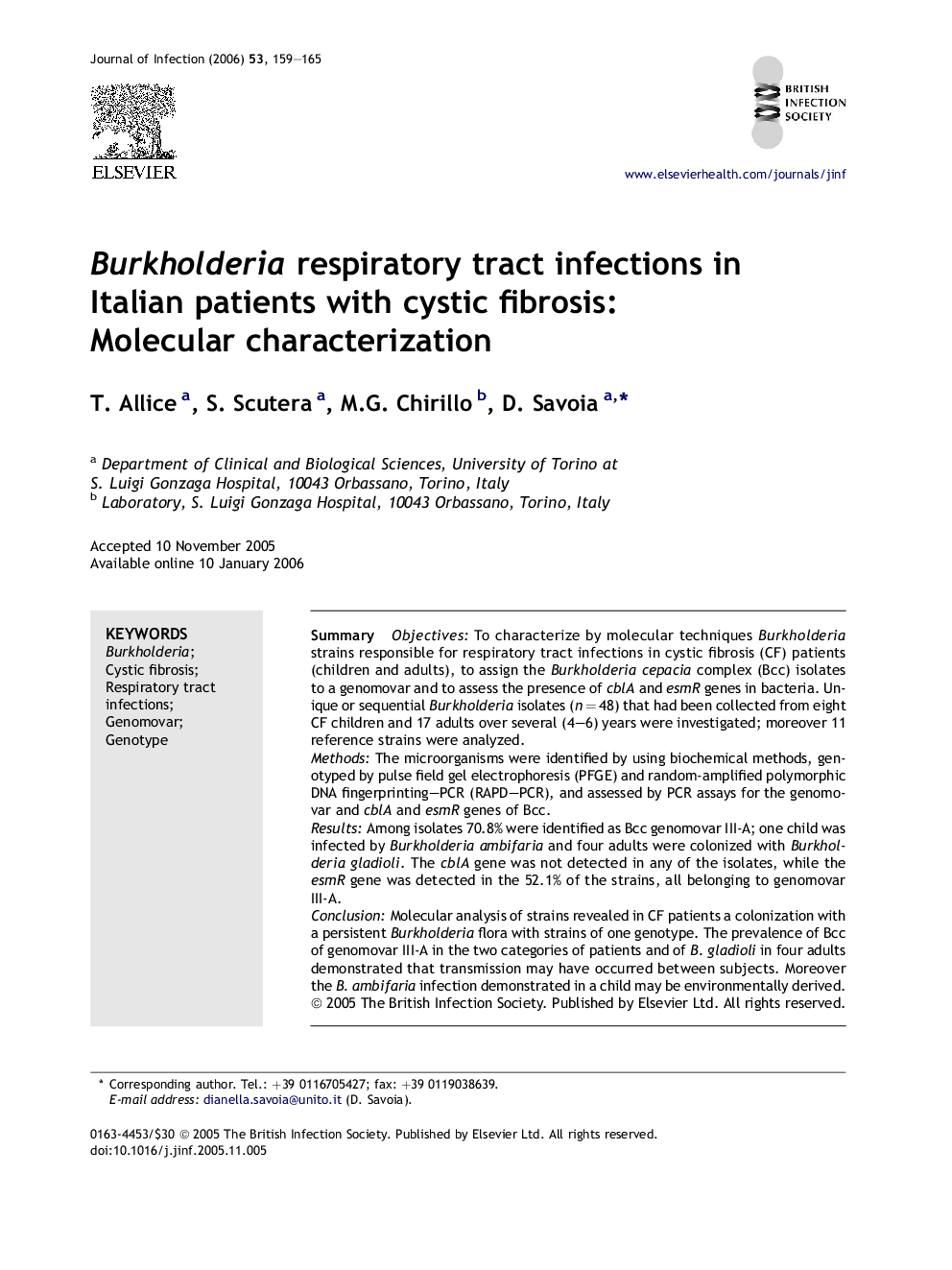| Article ID | Journal | Published Year | Pages | File Type |
|---|---|---|---|---|
| 3376273 | Journal of Infection | 2006 | 7 Pages |
SummaryObjectivesTo characterize by molecular techniques Burkholderia strains responsible for respiratory tract infections in cystic fibrosis (CF) patients (children and adults), to assign the Burkholderia cepacia complex (Bcc) isolates to a genomovar and to assess the presence of cblA and esmR genes in bacteria. Unique or sequential Burkholderia isolates (n = 48) that had been collected from eight CF children and 17 adults over several (4–6) years were investigated; moreover 11 reference strains were analyzed.MethodsThe microorganisms were identified by using biochemical methods, genotyped by pulse field gel electrophoresis (PFGE) and random-amplified polymorphic DNA fingerprinting–PCR (RAPD–PCR), and assessed by PCR assays for the genomovar and cblA and esmR genes of Bcc.ResultsAmong isolates 70.8% were identified as Bcc genomovar III-A; one child was infected by Burkholderia ambifaria and four adults were colonized with Burkholderia gladioli. The cblA gene was not detected in any of the isolates, while the esmR gene was detected in the 52.1% of the strains, all belonging to genomovar III-A.ConclusionMolecular analysis of strains revealed in CF patients a colonization with a persistent Burkholderia flora with strains of one genotype. The prevalence of Bcc of genomovar III-A in the two categories of patients and of B. gladioli in four adults demonstrated that transmission may have occurred between subjects. Moreover the B. ambifaria infection demonstrated in a child may be environmentally derived.
